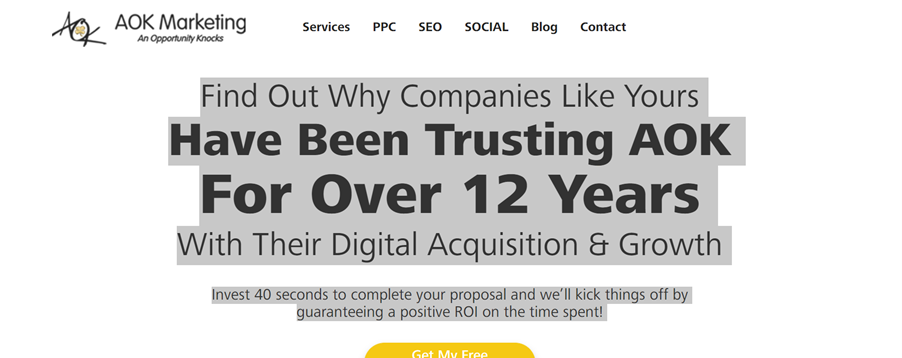Finding out your website’s organic traffic is on a steady decline can be disheartening. But making changes in blind panic without knowing the cause is the worst thing you can possibly do.
It may just be traffic decreased because you lost a significant backlink (like a link on their site’s sidebar or homepage to you). So you’ll either have to contact that website’s owner or work harder to acquire more links.
And sometimes it may not even be your fault- like an update in Google’s algorithm. Take a week or two. Let things settle and see where you stand.
If the problem persists, here are 5 things to do after a decrease in organic traffic:
1. Try Reversing Recent Big Changes
Most website redesigns happen because you saw a new feature or something was no longer working on your site. So you’ll get a complete redesign of your website. Built on user research of your buyer personas and following a solid information architecture plan.
Just the way Google likes it!
Yet, you start noticing a dip in traffic one week after implementing the changes. Then two months down the road, you’ve lost 50% of your organic traffic. And you’re left wondering- what went wrong.
Well, without an actual site audit, I can’t say for certain what the problem is. But it’s most likely:
- No SEO website redesign was done.
- If SEO was done then it wasn’t integrated properly during the web design process.
- No on-page and off-page audit was done before launching the new site.
Now that you know what’s wrong how can you fix it?
You know how when your phone is acting up- hangs or frequently restarts for no reason. What do you usually do? Throw it against the wall? You’d like to but there’s an easier and more effective way- restoring factory settings.
Try doing the same thing to your website. Only this time, undo the changes step by step. That way you’ll know which specific update caused the drop in organic traffic. And you can move on to…
2. Analyze Unaffected Pages
Looking at a site’s overall traffic metrics can be confusing. A good strategy is to segment the data until you find something interesting. When analyzing decline in traffic growth- something strange is a page where the number of visitors doesn’t decrease. Take a deep look at what’s working there.
Find out what makes that particular page different from the rest. Identify the keywords targeted and determine if that’s the reason traffic is holding steady. Make sure it isn’t an off-page issue like page load speeds or intrusive interstitials.
Page Speed Insight tool from Google can help you check page speeds.
For intrusive interstitials, which are page overlays blocking all or most of the content on a page. You may need to adjust how popups appear on your site. Check out Google’s guidelines and follow the recommendations.
3. Take a Look at Your Competitors
Sometimes organic traffic can decline without affecting ranking. That usually means the drop was caused by (a) an update in Google’s algorithm or (b) a change in users search intent.
Since Google makes thousands of updates every year and rarely acknowledges it- you can’t really prepare for it. Just monitor your site for a couple of days and see if organic traffic improves.
Changes in user search intent is much easier to diagnose. Because your ranking decreased, take a look at your replacement.
What’s on their pages that’s missing in yours? Infographics, whitepapers, Gifs, or all? Are they targeting a number of keywords you’re not? Or have they simply made changes to their internal linking layout and added more high-quality backlinks?
Pro tip: A decline in organic traffic doesn’t always mean you did something wrong. It can also imply your competitors are doing something better.
You can check the changes your competitors made using this free tool from Wayback Machine.
4. Build High Quality Relevant Backlinks
If Organic Traffic is the king of search then Backlinks is a prince of SEO. In fact, Google’s Panda algorithm update focused mainly on reducing the impact backlinks have on search results. Mostly because some site owners were participating in paid backlink schemes, link exchanges, linking to irrelevant sites, and using other manipulations to get to page one.
Nonetheless, anyone using white hat SEO techniques can still reap the benefits of higher ranking and more traffic. That also means a significant drop in backlinks can impact traffic to your site. And if that’s the case, your first step is to find out why you’re losing links.
Use a tool like Ahrefs to find sites linking to yours. And determine which links you’ve lost.
The next step is to acquire new links. A simple way to do this is to collaborate with other site owners to create blog posts. It’s also a good idea to frequently review Google’s link scheme recommendations to make sure you’re not doing more harm than good.
5. Review Your Content
Search engines rarely favour websites with poorly written, outdated, filler, or plagiarized content. For one thing, the first three don’t appeal to searchers. While the last, also referred to as duplicate content, just confuses bots. Which means the pages won’t be indexed and consequently don’t appear in search results.
To find out if a page has a duplicate, just copy some text and paste into Google’s search bar.
You should also know content can be flagged as a duplicate if you publish an article on your site then later republish it as a guest post on another site.
Plus, if you have several domain versions like aokmarketing.com, https://aokmarketing.com, and https://aokmarketing.com. The links may look the same but search engine bots will read them as completely different sites. Try each link. Only one of them should direct you to AOK Marketing.
Google may not penalize you for having multiple versions of your site but it will choose one version to be the original and exclude the rest. So if your SEO efforts were on the excluded versions, all your work won’t have any effect on ranking or traffic.
Here’s what you can do to avoid duplicate content:
- Choose your main website domain in Google Search Console.
- Use Siteliner to check for external duplicates.
Whether you mimic what your competitors are doing. Or work on ensuring your website redesign integrates seamlessly with your SEO. Make sure the changes align with Google’s Webmaster Quality Recommendations and Search Quality Evaluator guidelines.
About The Author
Marketing Team
The AOK Marketing Team is a diverse group of amazing individuals driven to help all of our clients succeed. Great people are everywhere, and we believe that people should control their workday, their work environment, and where they live. We have team members in 9 countries: United States, Canada, Egypt, Belgium, Ireland, Australia, India, Pakistan, and Hong Kong.
How can we help you?










